Story and photos by Kenneth Jessen
There are well over 1,500 ghost towns in Colorado. Many are abandoned mining camps spread out over the western half of the state. Among the most obscure is Duncan, located along the western base of the Sangre de Cristo Mountains.
The history of Duncan started in 1874 when John Duncan followed an old trail over Medano Pass into the San Luis Valley. At the mouth of Pole Creek, he discovered some “float,” or gold-bearing ore, that had washed down from the mountains. He constructed a durable cabin made of hand-hewn logs locked tightly together with corner notches. As word got out other prospectors were attracted to the area, and in 1890 a town grew up around his cabin. Duncan then turned from prospector to town promoter, laid out the town of Duncan, and sold lots for $25 each.
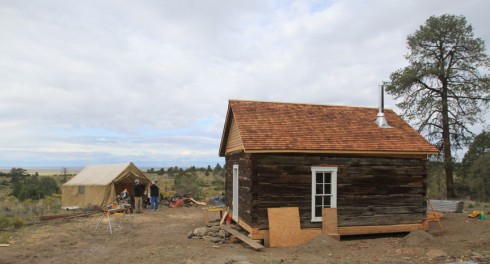
Duncan, however, wanted to return to prospecting and turned over the job of town developer to Charles Reed, owner and publisher of the Duncan Eagle. This was the camp’s weekly newspaper and cost all of $1.50 for a year’s subscription. Editor Reed reported about the activities in and around Duncan, but also took sides in national politic,s endorsing William Jennings Bryan for U.S. President in 1896. Hopeful candidate Bryan ran on a free coinage ticket that bolstered the price of silver in a fixed ratio to gold. Had Bryan won the election it would have benefited Colorado’s precious metal mines.
Stamp mills were constructed up Pole Creek above Duncan to process the gold ore. These were primitive devices that crushed the ore into sand-like consistency. The pulverized ore was then put in contact with mercury to amalgamate the gold. The gold-mercury amalgam was forced through cloth to remove most of the mercury with the remaining mercury driven off by heating.
In 1892, Duncan got its own post office and it remained open until 1900. Mail came six days a week, and the post office served 250 residents. This seems amazing considering how far removed Duncan was from the nearest population center, but it was on a north-south postal route that served a number of small towns along the base of the mountains. A “ride through” service was offered where a horseback rider could reach into his or her mailbox and retrieve the mail without entering the post office.
Duncan was a fairly large town and based on a modern survey of foundations, had as many as 50 structures. There were a variety of businesses including a dry goods store and two general merchandise stores. A freighting company, a couple of saloons, livery stable and lumberyard rounded out the businesses. Mrs. P. M. Harper operated a boardinghouse charging 35 cents a meal or $6 a week for all meals. Duncan had a physician, an attorney, a notary public and an assayer. A ditch was dug to divert some of the water from Pole Creek for use by town residents. Duncan also had a cemetery. Not only was there a north-south road, but another road came in from the west.
For the 18 school-age children, a school district was formed in 1893 by the parents. The school was a log building and served both Duncan and nearby Cottonwood. The last classes were held in 1899.
The townspeople paid for telephone poles and a wire to be stretched across the San Luis Valley from Duncan down to Hooper. Duncan citizens could now take turns talking to the outside world.
Living in Duncan was probably a struggle and the gold ore was not all that rich, but its small cabins were relatively comfortable. It all came to a sudden end starting in 1899, when George Adams purchased the Luis Maria Baca No. 4 Grant. Duncan was inside the grant, and its citizens were not owners of their town lots, but were squatters. Adams contended that he not only owned the grazing rights, but mineral rights as well. A legal battle over land ownership ended up in the courts and the ruling was in favor of the Baca Grant owner.
In 1900, the citizens of both Cottonwood and Duncan were evicted by U.S. Marshals stationed in temporary quarters to carry out the court order. Home owners were compensated by the Baca Grant at $125 for each structure and were subsequently allowed to buy back their homes for $10 providing that they move off the grant. All of Duncan’s buildings were either razed or moved except for the durable John Duncan cabin. It was converted for use by the ranch.
Float had also been discovered to the south, at the mouth of Short Creek just outside the Baca Grant. As the residents of Duncan were evicted, some probably left the area, and others moved to Crestone, while a few moved south to Short Creek and set up a new town they called Liberty. It was only about a mile away, and no doubt some of Duncan’s log cabins were disassembled and moved to Liberty. A post office opened and remained active until 1921. A stamp mill was built but the ore was low grade, and Liberty was eventually abandoned.
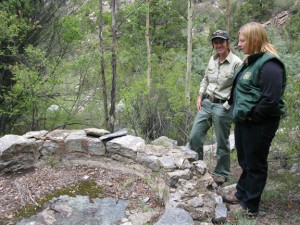
Jumping ahead to 2000, Congress passed into law the Great Sand Dunes National Park Act, authorizing the Secretary of the Interior to transition the Great Sand Dunes National Monument to a park through the purchase of the undeveloped southern portion of the Luis Maria Baca No. 4 Grant. The land was acquired through the Nature Conservancy, and once the transaction was complete the area was divided. The new Great Sand Dunes National Park, the new Baca National Wildlife Refuge and the Rio Grande National Forest all got portions of the purchase. The Forest Service received 13,000 acres of ranchland including the Duncan town site and the John Duncan cabin. Due to the historical significance of the cabin and its poor condition, it was decided to save the structure. During the summer and fall of 2011, three work sessions of four days per session were set up for six to ten volunteers. The cabin was “de-constructed” log by log, the rotten course of lower logs was replaced and the cabin rebuilt. The cabin received a new roof including rafters. A new ceiling and floor were also installed. New windows and door along with chinking made the structure weather tight. In all, an estimated 500 hours or more was put into the restoration. Future plans call for renting the Duncan cabin to those that wish a backcountry experience much like other restored Forest Service structures in the state.
Kenneth Jessen is a resident of Loveland, Colorado and author of 20 books specific to the state. His latest book, Colorado’s Best Ghost Towns, came out in September. Jessen also writes for the Loveland Reporter-Herald, North-Forty News and the Estes Park News.

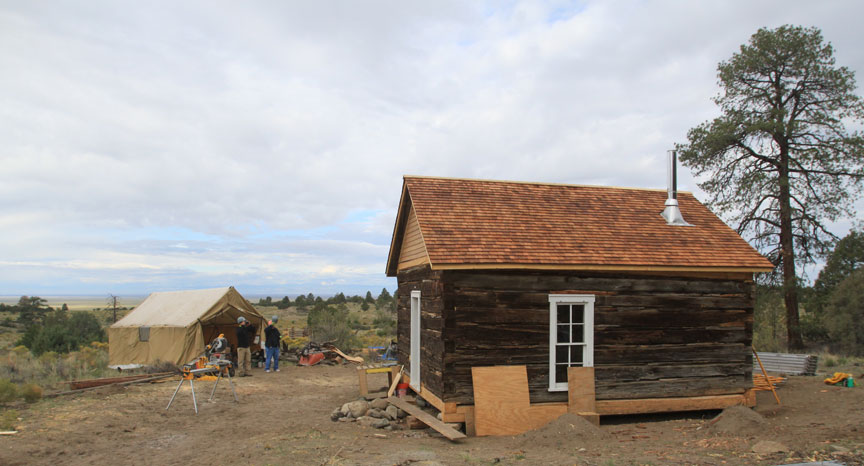
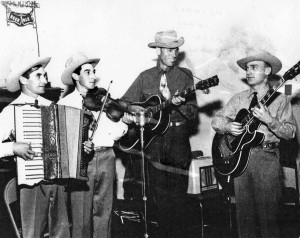
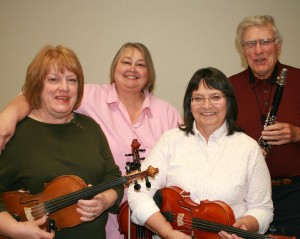
I’ve been doing some intial research on this general geographic area for scenes in my next novel and I found this article utterly fascinating. Thank you for the sharing a little bit of the historic richness and significance of this place.
This article was fascinating to me because my family had a ranch near Hooper which included leases on Short Creek and Sand Creek in the 1970s. We had a one-room cabin on Liberty Flats, somewhat like the Duncan cabin. I became interested in the history of the area and had, in fact, planned to write a children’s novel based there. Instead, I have published a contemporary Christian romance novel, THUNDERBIRD, set in the Valley. Thanks for the interesting article. It stirred up wonderful memories.